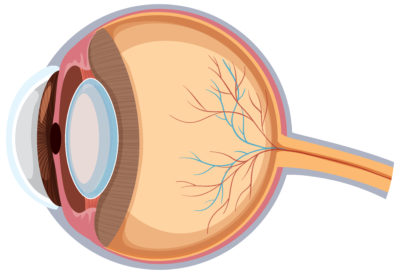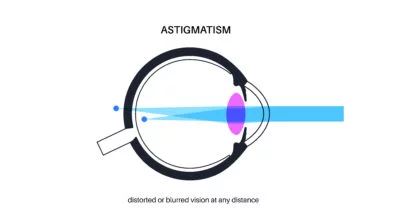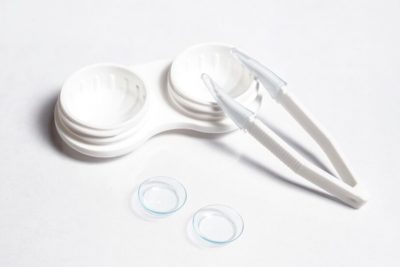Implantable contact lenses (ICL) are a wonderful tool, a breakthrough in technology, which is allowing many people to get freedom from glasses and contact lenses. All those who were not suitable for Lasik, Epi Lasik/PRK and Femto Lasik have another option to consider. ICL are specialized advanced lenses which are made from Collamer, a copolymer of collagen. Collagen is the naturally occurring substance present in the human eye. ICL are very thin andinvisible once implanted in the eye. It is safe, effective and improves unaided vision in all cases. However, it does require proper planning and customization. Improper sizing can cause high pressure, cataract etc. and may require the ICL to be explanted or rather removed from the eye.
Let’s understand some of the pros and cons of ICL surgery compared to Lasik surgery.
Some of the advantages are-
- Improve lifestyle– A lot of people have concerns around the limitation these lenses may impose on their life style. Ritu had very thin corneas and she was not suitable for Lasik. She was found suitable for ICL after a detailed pre procedure evaluation. She underwent the procedure successfully and had a wonderful vision after the procedure. At her 3 month follow up she complained that she is getting fat as she can no longer swim an activity she used to enjoy earlier. Her remarked perplexed me and I enquired as to why she cannot swim. She very innocently remarked that’s because she got the ICL surgery and that she has thelens in her eyes. She additionally remarked that it was a big disadvantage of ICL surgery. I could not help but smile at her innocence and ignorance. Implantable contact lenses are not similar to contact lenses that are inserted on the surface of the eye and then removed every night.We do not advise swimming with normal day to day contact lenses. ICL unlike contact lenses are inserted inside the eye and are not exposed to any external environment. So an individual can partake into any kind of activity they desire one month after ICL surgery. Due to the freedom from glasses most people enjoy all kinds of contact sports and outdoor activities which earlier were a big hassle for them like outdoor running, swimming, hiking, biking, diving etc.
- Improved quality of vision– ICL surgery does not modify the corneal curvature at all. Through a keyhole incision ICL is inserted inside the eye. By virtue of its negligible effect on the corneal curvature the quality of vision in most cases is even superior to Lasik. Night vision issues like glare, etc. are negligible after ICL surgery in most people.
- Great option for farsightedness– A lot of people are not advised Lasik for positive numbers and that is due to the high risk of regression post Lasik surgery in these cases. If found suitable with adequate AC depth, etc. ICL can be a great option in these cases. There is no risk of regression and patients can enjoy a spectacle free vision.
- High powers– People with very high extreme powers such as -20 etc. are not suitable for Lasik if they want near complete removal of eye power. If suitable ICL can be a great option in these people.
- Quick Recovery-Within a week to ten days after ICL surgery a patient feels normal. Most people can get back to work within a few days and normal lifestyle by one month.
- Less risk of Dry Eye– ICL is implanted inside the eye through a very small incision and hence its effect on the corneal sensations and the curvature is negligible. This reduces the risk of dryness predisposition after the surgery.
Some of the disadvantages compared to Lasik are-
- Increased eye Pressure– Improper sizing of ICL surgery can lead to high pressure in the eye. In cases where eye pressure is not getting controlled or if there is a gross sizing abnormality ICL may need to be removed from the eye.
- Cataract development– It can happen in around 5-10% cases. This is believed to be due to the close proximity of the ICL to the crystalline lens inside the eye. If cataract is progressive, patient may need a cataract surgery.
- Corneal endothelial cell loss– Endothelium is a layer which lines the back side of the cornea. It is a very important layer and is responsible for maintaining the clarity of the cornea. It works as a pump and removes the excess fluid form the cornea. There is an enhanced cell loss after ICL implantation. In some cases where cell reserve is poor this can predispose to future complications. It is therefore important to ensure optimal corneal health prior to planning the ICL surgery.
Ranjan had a very high minus numbers and his corneal thickness was not adequate for the correction of eye power. He visited us at the Advanced Eye Hospital to explore the options. He had been told about ICL and he wanted to get the ICL surgery done. On his eye evaluation, we detected that his cornea had an abnormality called Fuchs Endothelial Dystrophy. In this problem the corneal endothelial cells do not function properly and also the cell count deteriorates with time. In such cases ICL is not the right option.
In conclusion all I would say that, just like Lasik surgery, ICL surgery has its own unique set of pros and cons. It is important to understand the issues related to surgery, the recovery period, chances of complications, side effects and the expected outcomes after ICL surgery.










